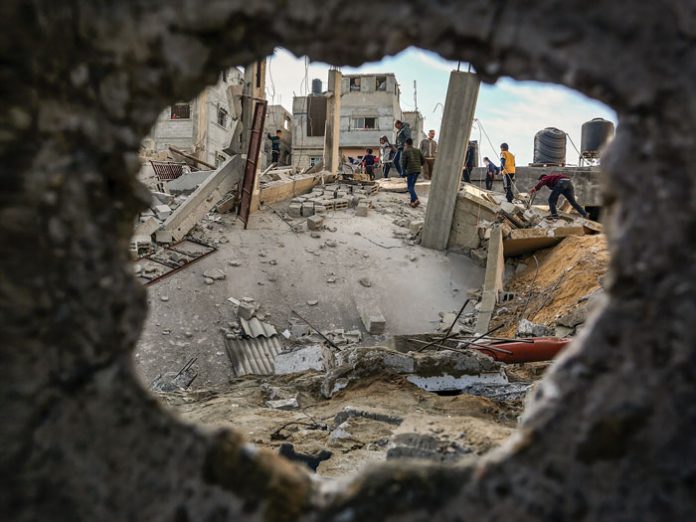A Deadly Rain of Missiles
Why did the Palestinians start another murderous conflict now?
About 700 missiles streaked over the border from Gaza into Israel in a period of just two days this week, fired by Hamas and Islamic Jihad. Four Israelis were killed, including one whose car was hit by an anti-tank missile fired by Hamas, and dozens were injured. The barrage ended on Monday with a ceasefire—but questions remain.
Why was the missile attack so deadly this time, despite Iron Dome? According to reports, Hamas trumpeted a new strategy: overwhelming Iron Dome by firing a massive barrage at once. (The IDF said, however, that Iron Dome still had an 86 percent success rate, suggesting the Hamas strategy was less successful than they claimed.)
Those rockets killed two men in Ashkelon, Moshe Agadi, 58, and Ziad al-Hamamda, 47, and one in Ashdod, Pinchas Menachem Przewozman, 21.
Moshe Feder, 68, was the man killed by the anti-tank fire near Kibbutz Erez. The IDF is investigating why the road he was traveling on remained open during the fighting. It appears that local commanders believed that projectile fire would not reach it, an error Mr. Feder may have paid for with his life.
Israeli President Reuven Rivlin noted that the murdered Israelis formed a kind of cross-section of the country’s demographics: one secular, one dati, one chareidi and one Bedouin.
Israel struck back at Hamas and Islamic Jihad, destroying a selection of the groups’ infrastructure in Gaza and killing a number of its militant members. Twenty-nine Palestinians were reported to have died; at least 11 were members of Hamas. The deaths of a pregnant woman and her child were blamed by Hamas on Israel, but the IDF said that it was actually due to a Gazan rocket that failed to make it into Israel.
Israel hit several noteworthy targets. One was a Hamas center for cyber warfare. (See the following article.) Another was Hamed Hamdan al-Khodari, a Hamas member who directed the flow of Iranian money into Gaza. This was an apparent return to targeted killings on the part of Israel, a tactic that they had moved away from in recent years.
It is believed, however, that Hamas leaders were able to find sanctuary in the group’s underground facilities throughout Gaza.
To some observers, the violence was tied to a decision by the Qataris to not deliver a monthly payment of $30 million to the Gaza Strip. The Israelis said that the delay was not their fault; the Qatari envoy to Israel and the Palestinian Authority, Mohammed Al-Emadi, who would normally have brought the payment, was called to the US because of a sick relative.
Hamas may have also seen this period as particularly sensitive to Israel due to the upcoming Eurovision competition and the questions of the safety of foreign guests.
But that’s only part of the narrative of this latest conflict, as Dr. Kobi Michael, a senior research fellow at INSS and an expert on conflicts with the Palestinians noted.
First, he pointed out that the round of fighting was actually started by an Islamic Jihad sniper, who targeted Israeli soldiers on Friday, wounding two of them. In response, Israel attacked Hamas, which it holds responsible for actions in the Gaza Strip, and two Hamas activists were killed. And that followed the firing of a missile by Islamic Jihad last week on Tuesday.
He noted that the situation is complex, and although Hamas joined in readily with Islamic Jihad in this latest round of missile launches and even set up a command center with them, according to media reports, the two groups have different objectives.
“Hamas is not only a terror organization. It is also a political and social movement, and it sees itself as an alternative to Fatah as a government for the Palestinians,” he said. “Islamic Jihad has no aspirations for ruling. Its motivation is its jihadic goal to destroy Israel and create a chaotic situation, to promote its vision of an Islamic caliphate.”
He noted that Hamas has been exposed to backlash from the Gaza street, which sees the group as having failed to deliver any respite from the Israeli blockade. Demonstrations a month ago, which Hamas brought an iron fist down upon, show how tenuous the group’s support has been.





















